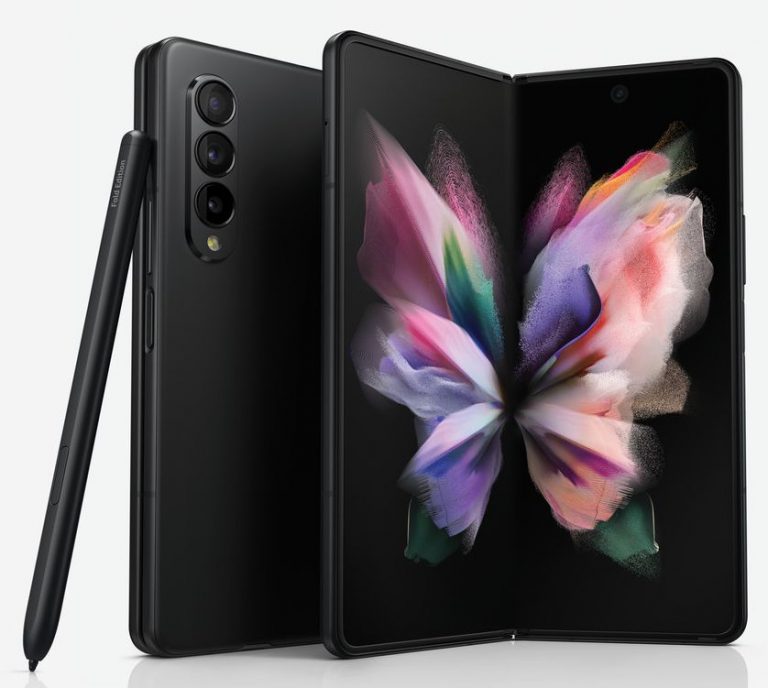
Samsung galaxy z fold 3 software#
Otherwise, Samsung has kept on top of software updates. The only game in townĬomplaints about the Galaxy Z Fold 3 after about eight months? It’s expensive, heavy, and Google still hasn’t released a split-screen version of its Gboard keyboard. There’s no snap, no clunk, and no evidence of any grind from the hinge. It maintains a similar resistance throughout the motion, right up until the last second when it pulls itself closed.

There are no unsettling sounds from the hinge when you open it up, and closing it is a tactile joy.

The Fold 3’s hinge has softened over time, but that’s a good thing! Early on, it was very stiff, to the point where it was a bit of an effort to get the motion started.
Samsung galaxy z fold 3 pro#
For some context, my review Pixel 6 Pro picked up scratches on the front and back within a few days of similar use, and the screen on my iPhone 13 Pro has several light scratches that it’s gathered over the past eight months. Samsung made a big deal over the Z Fold 3’s durability, and so far, it’s justified. The under-display selfie camera is so effectively hidden I’ve forgotten it’s there. The crease is there, but I don’t notice it when the screen is active. There are no scratches on the outer screen or the rear panel, the outer part of the hinge on my Phantom Silver version is unmarked, and the inner screen appears new. I keep it in my pocket or bag and treat it like any other phone I own or review. It’s not in a case, nor does it have any additional screen protection. I’ve not babied the Z Fold 3 either, and have no concerns over its build quality or toughness. Yes, there’s a period of adjustment needed, but it’s not extreme, nor is it long and drawn out. The general livability is what people may not be expecting. After all, it won’t come as a surprise that when you open the Z Fold 3 to watch videos, read, or play a game that it’s brilliant. And the effortless way the Fold 3 has excelled at them has been beyond impressive. If I use the Galaxy Z Fold 3 more folded up, why bother having an $1,800 folding phone? Over the past weeks, life has dictated I use the Z Fold 3 for more basic tasks - calls, messages, and web browsing - than usual. It’s a very different experience from the original Galaxy Fold, which I used almost solely with the screen open. The unusual size and shape of the folded-up Galaxy Z Fold 3 can be off-putting, but the more I use the phone, the less of an issue it has become. The fingerprint sensor in the power button is fast, to the point where I use it more than the face unlock system. The Fold 3 is also easy to accurately place against your ear, and I’ve done far less shifting around trying to find the speaker’s sweet spot than usual when using it. It’s also super secure in your hand, and the speaker is loud and clear. When making calls, the bar-like dimensions means there’s more to hold. I open the screen out when needed, not because I have to. I’ve quickly discovered the Fold 3 works really well when it’s closed, which is perhaps at odds with some perceptions of the device. While the Z Fold 3 does feel very unusual at first, it’s something I’ve grown used to after using the phone since launch. At its largest point, it’s 16mm - twice the nearly 8mm thick iPhone 13. The Galaxy Z Fold 3 is tall and slim when folded up. Yet it’s much taller at 158mm compared to the iPhone 13’s 146mm. It’s 67mm wide, while an iPhone 13 with its 6.1-inch screen is nearly 72mm wide.

Where it differs from other phones with similar-sized screens is in its overall dimensions. Closed, the Galaxy Z Fold 3 has a standard-sounding 6.2-inch AMOLED screen, 2268 x 832 resolution, and a dynamic refresh rate up to 120Hz.


 0 kommentar(er)
0 kommentar(er)
